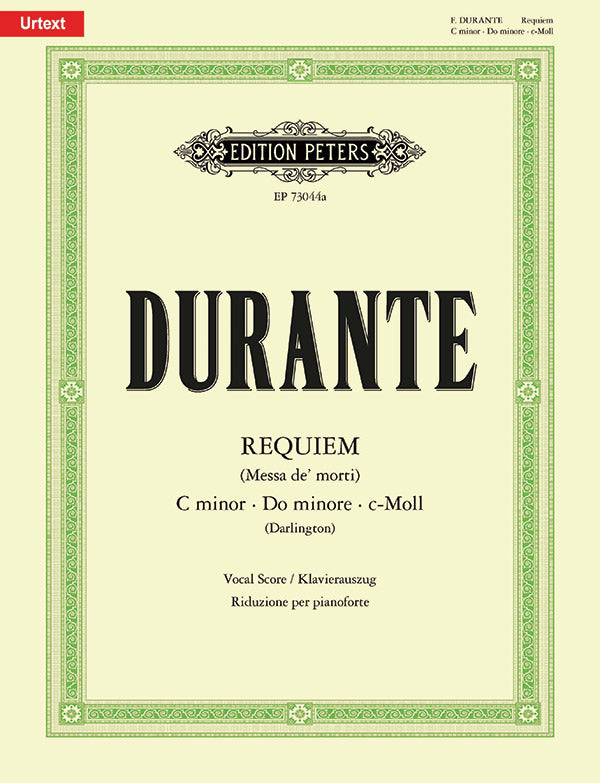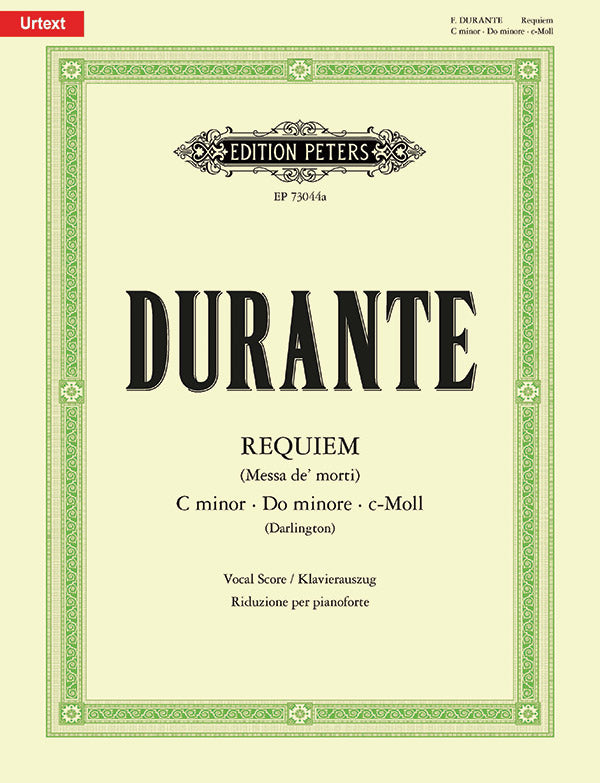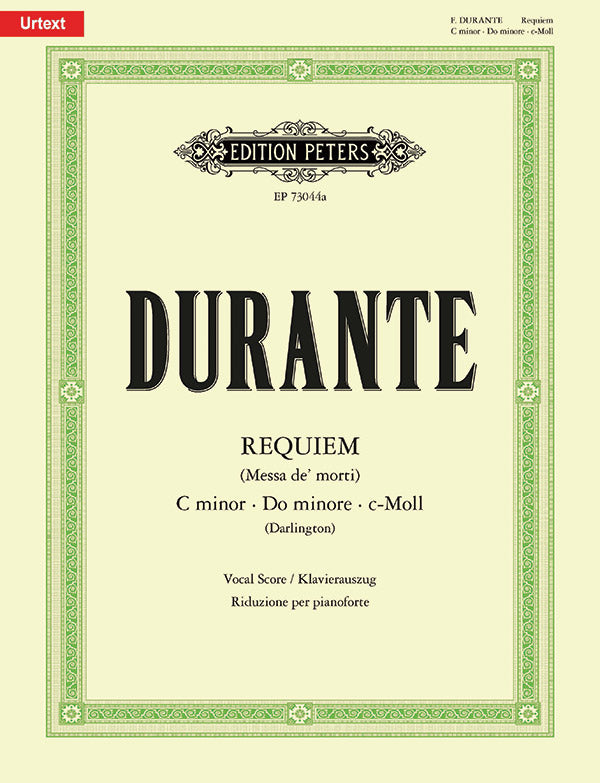Francesco Durante
Durante: Requiem in C Minor
Messa de' morti
- Composer: Francesco Durante (1684-1755)
- Format: Vocal Score
- Instrumentation: Soprano, Orchestra, Alto, Double Choir (SATB + SATB)
- Work: Requiem in C Minor (Messa de' morti)
- Work Language: Latin
- ISMN:
- Size: 7.5 x 10.7 inches
- Pages: 112
- Urtext / Critical Edition
Description
The Requiem in C Minor by Francesco Durante (1684–1755) is one of the most important works of this genre written in the first half of the 18th century. in his Messa de' morti, Durante shows great creativity in combining traditional elements of church music with new ideas originating from instrumental writing and opera. The quality and originality of his Requiem make it an exciting rediscovery with the potential to establish itself as a core repertoire work of sacred choral music.
Mainly known today as the teacher of Pergolesi and Paisiello, Durante spent much of his life working as music director at various conservatories in Naples and enjoyed great renown as a church composer well into the 19th century. Despite its widespread popularity, indicated by the number of manuscript copies to be found across Europe, his Requiem never appeared in print. for this first publication, editor and leading British choral director Stephen Darlington has consulted many of the approximately 50 surviving sources of the work, presenting a critical edition which for the first time makes Durante's Requiem available to a wider musical audience.
- First publication
- Urtext edition
- Particularly suitable for smaller choirs and ensembles: soprano and alto solo, double choir (SSATB ATB) and strings (plus 2 horns in the Tuba mirum)
Publishers use a lot of words to describe what they sell, and we know it can be confusing. We've tried to be as clear as possible to make sure you get exactly what you are looking for. Below are descriptions of the terms that we use to describe the various formats that music often comes in.
Choral Score
A score for vocalists that only contains the vocal lines. The instrumental parts are not there for reference. Generally, cheaper than a vocal score and requires multiple copies for purchase.
Facsimile
Reproductions of the original hand-written scores from the composer.
Full Score
For ensemble music, this indicates that the edition contains all parts on a single system (there are not separate parts for each player). In larger ensembles, this is for the conductor.
Hardcover
Hardbound. Generally either linen-covered or half-leather.
Orchestral Parts
Similar to a wind set, this is a collection of parts. In the case of strings, the numbers listed are the number of copies included, though generally these are available individually (often with minimum quantities required).
Paperback
When publishers offer multiple bindings (e.g. hardcover) or study scores, this is the "standard" version. If you're planning to play the music, this is probably what you want.
Performance / Playing Score
A score of the music containing all parts on one system, intended for players to share. There are not separate parts for each player.
Set of Parts
For ensemble music, this indicates that there are separate individual parts for each player.
Solo Part with Piano Reduction
For solo pieces with orchestra, this is a version that contains a piano reduction of the orchestra parts. For piano pieces, two copies are typically needed for performance.
Study Score
A small (think choral size) copy of the complete score meant for studying, and not playing. They make great add-ons when learning concertos and small chamber works.
Vocal Score
A score prepared for vocalists that includes the piano/organ part or a reduction of the instrumental parts.
Wind Set
For orchestral music, this is a collection of wind and percussion parts. The specific quantities of each instrument are notated.
With Audio
In addition to the printed music, the edition contains recordings of the pieces. This may be an included CD, or access to files on the internet.
With / Without Fingering (Markings)
Some publishers prepare two copies - a pure Urtext edition that includes no fingering (or bowing) suggestions and a lightly edited version that includes a minimal number of editorial markings.




